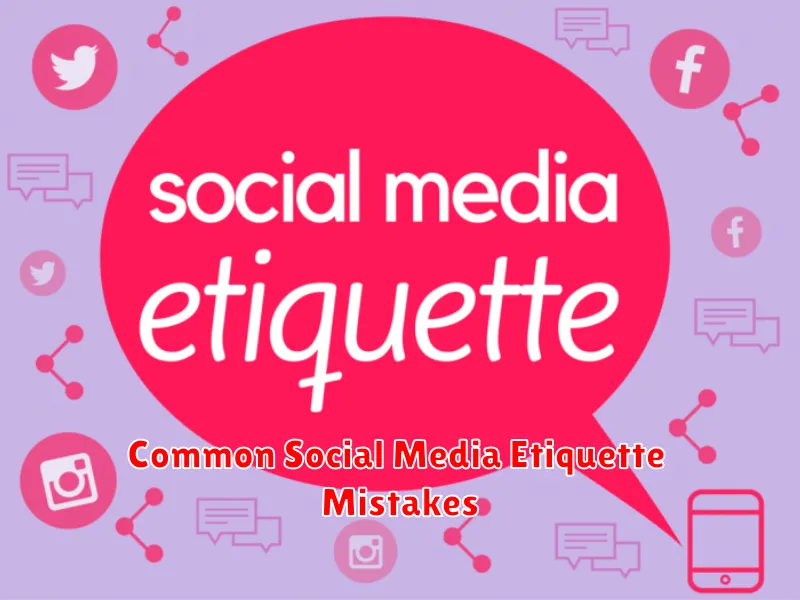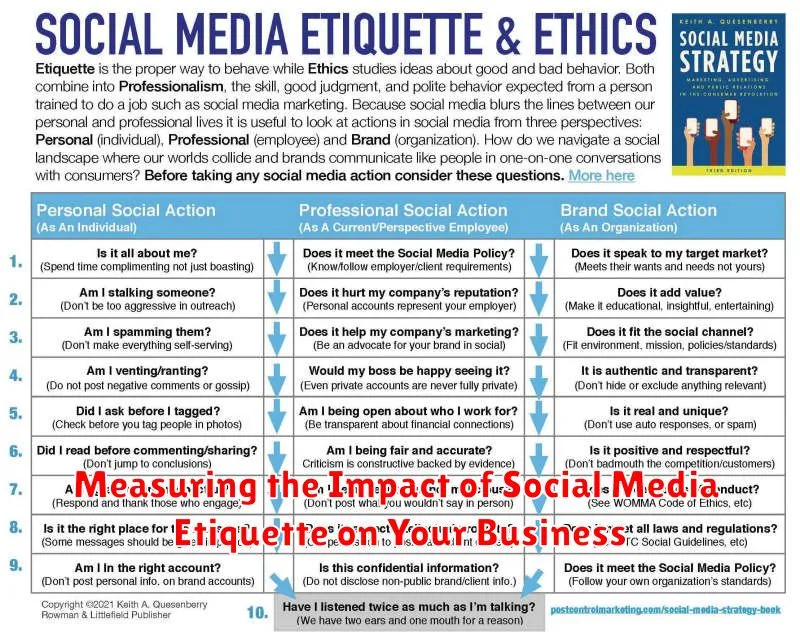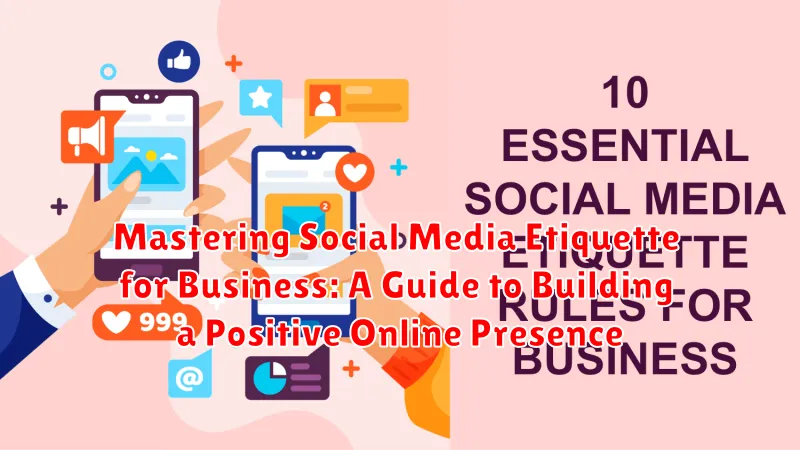In today’s digitally driven world, a strong social media presence is no longer optional for businesses; it’s essential. Mastering social media etiquette is crucial for cultivating a positive online presence that fosters trust, builds relationships, and ultimately drives success. This guide will provide you with the knowledge and tools necessary to navigate the complexities of social media, ensuring your interactions are professional, engaging, and reflect positively on your brand. Learn how to leverage social media platforms effectively, avoid common pitfalls, and create a cohesive online presence that strengthens your business.
From understanding the nuances of each platform to crafting engaging content and handling negative feedback with grace, this comprehensive guide will cover every aspect of social media etiquette for business. We will explore best practices for communication, content creation, and community engagement, helping you build a positive brand image and establish your business as a leader in your industry. By mastering these essential skills, you can unlock the true potential of social media and transform it into a powerful engine for growth and success.
Understanding Social Media Etiquette
Social media etiquette encompasses the informal rules and conventions that govern online interactions. It’s about presenting your business professionally and respectfully while building positive relationships with your audience.
Key aspects of social media etiquette include using appropriate language, respecting others’ opinions, and engaging in constructive dialogue. It also involves understanding the nuances of each platform, as expectations can vary.
Essentially, good etiquette translates to being a good digital citizen. This involves avoiding spam, respecting privacy, and crediting sources when sharing content. Think of social media as a large networking event, where your actions reflect on your brand.
The Importance of Social Media Etiquette for Business
In today’s digital landscape, social media presence is crucial for business success. Social media etiquette dictates how a business interacts online, directly impacting its reputation and bottom line.
Maintaining proper etiquette cultivates a positive brand image. Polite and respectful interactions foster trust with potential customers, showcasing professionalism and building a loyal following.
Effective communication is another key benefit. Clear and considerate messaging minimizes misunderstandings and strengthens customer relationships. This positive online interaction translates to increased customer satisfaction and brand loyalty.
Finally, strong social media etiquette protects your brand reputation. Avoiding negative interactions or inflammatory content prevents public relations crises and safeguards the company’s image. This proactive approach maintains a strong and trustworthy brand presence in the competitive online marketplace.
Creating a Social Media Etiquette Policy for Your Business
A well-defined social media etiquette policy is crucial for maintaining a professional and consistent online presence. This policy acts as a guide for employees and representatives on how to engage on social media platforms, representing your brand appropriately.
Start by outlining the purpose of your social media presence. Define your target audience and the key messages you want to convey. Clearly state the platforms your business will utilize.
Establish guidelines for content creation and sharing. Specify what type of content is permissible and what should be avoided. Address issues like confidentiality, disclosure, and copyright infringement. Provide examples of acceptable and unacceptable posts.
Define roles and responsibilities. Who is authorized to post on behalf of the company? Who monitors social media activity and responds to inquiries? A clear chain of command ensures accountability.
Include a crisis management plan. How will your business handle negative comments, online attacks, or PR crises? Having a predetermined protocol will help mitigate potential damage.
Best Practices for Social Media Engagement
Engaging effectively on social media requires a strategic approach. Be responsive to comments and messages, aiming to reply promptly. This shows your audience you value their interaction. Personalize your responses whenever possible, avoiding generic replies. Addressing users by name and referencing specific details from their comments helps build rapport.
Ask questions to encourage conversations and foster a sense of community. Polls, Q&A sessions, and open-ended questions are effective tools. Share valuable content relevant to your audience’s interests. This might include industry news, helpful tips, or entertaining posts related to your brand. Prioritize quality over quantity.
Use visuals strategically to capture attention and enhance engagement. Images and videos tend to perform better than text-only posts. Be mindful of posting frequency. Consistency is key, but avoid overwhelming your audience with excessive posts. Develop a posting schedule that aligns with your audience’s activity patterns.
Handling Negative Comments and Feedback
Negative comments and feedback are an inevitable part of having a social media presence. Handling these situations gracefully is crucial for maintaining a positive brand image. Never ignore negative comments. This can escalate the situation and damage your reputation.
Respond promptly and professionally to all comments, even negative ones. Acknowledge the feedback and thank the individual for sharing their concerns. If the comment is valid, apologize and offer a solution. If the comment is inappropriate or abusive, address it firmly but politely. Consider establishing clear guidelines for what constitutes unacceptable behavior on your social media platforms.
When responding, keep your tone neutral and avoid getting defensive. Empathize with the commenter’s perspective, even if you disagree with their opinion. Aim to resolve the issue publicly, demonstrating your commitment to customer satisfaction. However, if the issue is complex or sensitive, offer to take the conversation offline via direct message or email.
Common Social Media Etiquette Mistakes

Even with the best intentions, businesses can make social media etiquette missteps. Avoiding these common errors is crucial for maintaining a positive online presence.
Over-Promoting: Constantly pushing sales and promotional content can alienate your audience. Focus on providing value and building relationships.
Ignoring Comments and Messages: Failing to respond to inquiries and feedback makes your business appear uncaring and unresponsive. Acknowledge and address comments promptly, even negative ones.
Inconsistent Branding: Maintain a consistent brand voice and image across all social media platforms. Inconsistent branding can confuse your audience and damage your brand identity.
Hashtag Overuse: While hashtags are useful for discoverability, using too many can appear spammy and detract from your message. Use hashtags strategically and relevantly.
Not Proofreading: Typos and grammatical errors make your business look unprofessional. Always proofread your posts before publishing.
Measuring the Impact of Social Media Etiquette on Your Business

Measuring the impact of social media etiquette can be challenging, but several key metrics can provide valuable insights. Tracking these metrics can demonstrate the effectiveness of your social media etiquette strategy and its contribution to overall business goals.
Engagement Metrics: Monitor likes, shares, comments, and retweets. A positive trend in these metrics suggests that your audience is resonating with your content and appreciating your respectful online interactions. Decreased negative comments can also indicate improved etiquette.
Reach and Impressions: Observe how your content’s reach and impressions change over time. Positive etiquette can expand your audience as users are more likely to share and engage with respectful content, leading to organic growth.
Customer Sentiment Analysis: Employ social listening tools to gauge the overall sentiment towards your brand. This can reveal whether the perception of your business is improving due to positive online interactions.
Website Traffic: Track referral traffic from social media platforms to your website. An increase in traffic indicates that engaging content and courteous interactions are driving users to explore your products or services further.
Staying Up-to-Date with Social Media Etiquette Trends
The digital landscape is constantly evolving, and so are the rules of engagement. Staying current with social media etiquette trends is crucial for maintaining a positive online presence. Failing to adapt can lead to misinterpretations, damage to your brand’s reputation, and missed opportunities.
Regularly reviewing platform policies is a good starting point. Each platform has its own specific guidelines and updates. Following industry experts and thought leaders can also provide valuable insights into emerging trends and best practices. Subscribe to relevant newsletters, attend webinars, and participate in online discussions to stay informed.
Pay attention to shifting cultural norms and conversations. What was acceptable yesterday might be considered inappropriate today. Being aware of these changes can help you avoid unintentional offenses and ensure your communication remains respectful and inclusive.
Monitor your competitors. Observing how other businesses in your industry are adapting to new etiquette trends can offer valuable learning opportunities. Analyze their successes and failures to refine your own social media strategy.

